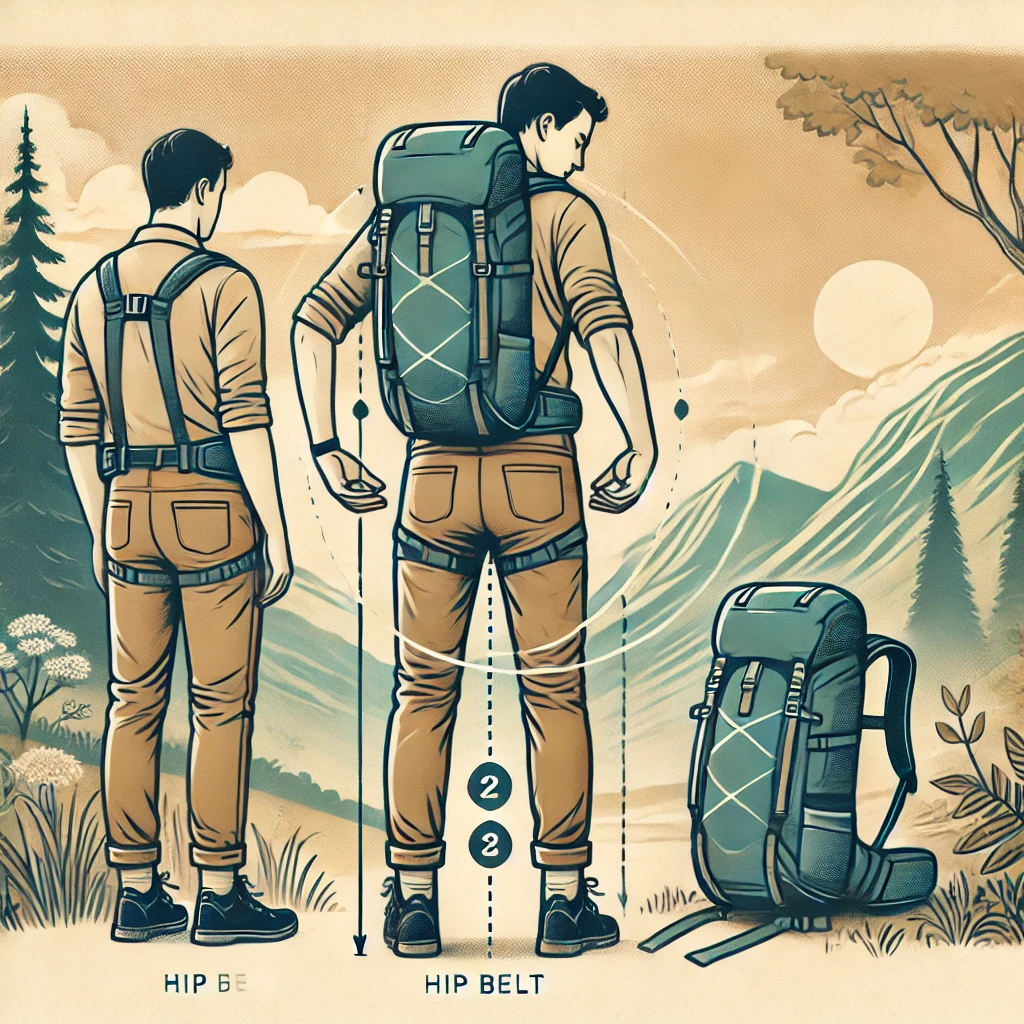Introduction
Properly fitting a backpack is essential for comfort and safety on the trail. However, even experienced hikers can make mistakes that lead to discomfort, poor weight distribution, or even injury. Here are the most common mistakes to avoid when fitting a backpack:
1. Ignoring Torso Length Measurements
Mistake: Selecting a backpack based solely on height or guessing the fit can lead to choosing the wrong size.
Avoidance Tip: Always measure your torso length and choose a backpack that matches. Backpack sizes (small, medium, large) are usually based on torso length, not overall height, so this measurement is crucial for a proper fit.
2. Misplacing the Hip Belt

Mistake: Positioning the hip belt too high (on the waist) or too low (below the hips) can cause the backpack’s weight to rest incorrectly, leading to back pain and instability.
Avoidance Tip: Position the hip belt directly over your hip bones (iliac crest). The padding should wrap comfortably around your hips, and the belt should support the majority of the pack’s weight, relieving pressure from your shoulders.
3. Over-Tightening Shoulder Straps
Mistake: Many people overtighten the shoulder straps, causing the backpack to ride high on their back, leading to shoulder strain and discomfort.
Avoidance Tip: Shoulder straps should be snug but not bearing most of the weight. The primary job of these straps is to stabilize the pack against your back, not carry the load. Most of the weight should sit on your hips.
4. Neglecting Load Lifters
Mistake: Forgetting to adjust the load lifters (the straps connecting the shoulder straps to the top of the pack) can cause the pack to tilt backward, putting stress on your lower back and making you lean forward to compensate.
Avoidance Tip: Tighten the load lifters until they form a 45-degree angle between your shoulders and the pack. This pulls the top of the pack closer to your body, improving balance and stability.
5. Incorrect Sternum Strap Placement
Mistake: Placing the sternum strap too high (near the neck) or too low (near the chest) can affect breathing and cause shoulder straps to dig into the neck.
Avoidance Tip: Position the sternum strap about an inch below your collarbone. It should be tight enough to keep the shoulder straps from slipping but not so tight that it restricts chest movement.
6. Uneven Weight Distribution
Mistake: Loading the backpack unevenly, with heavy items placed too far from your back or on one side, can throw off your balance and cause discomfort.
Avoidance Tip: Distribute the weight evenly, keeping the heaviest items close to your back and centered. Use the pack’s compartments and straps to keep things organized and balanced.
7. Overloading the Pack Beyond Its Capacity
Mistake: Exceeding the backpack’s recommended weight capacity can strain both the pack and your body, leading to discomfort and increased risk of injury.
Avoidance Tip: Follow the manufacturer’s guidelines for the maximum load capacity. Ideally, your pack should weigh no more than 20-25% of your body weight for day hiking and up to 30-35% for backpacking, depending on your fitness level.
8. Not Testing the Fit with Weight
Mistake: Adjusting the backpack without testing it with actual weight can lead to surprises when you hit the trail, as the fit often changes with added load.
Avoidance Tip: Always test your backpack with the expected weight before your trip. Walk around, make final adjustments, and ensure that the pack remains comfortable under load.
9. Forgetting to Recheck Fit Throughout the Hike
Mistake: Your body and pack will shift as you hike, especially on longer treks. Ignoring this can lead to discomfort as the pack’s fit changes over time.
Avoidance Tip: Periodically recheck and adjust your pack throughout your hike, especially after rest stops or significant terrain changes.
10. Using a One-Size-Fits-All Mentality
Mistake: Assuming that any backpack will fit well as long as it’s on your back can result in poor fit and discomfort, as different brands and models have unique fit features.
Avoidance Tip: Take the time to adjust each pack component to your specific body type. Visit outdoor stores and try on different packs to find the best fit for you.
Conclusion
Avoiding these common mistakes will enhance your backpacking experience, making your hikes more enjoyable and reducing the risk of strain or injury. Proper fit is key to ensuring that you can focus on the journey rather than discomfort along the way.



